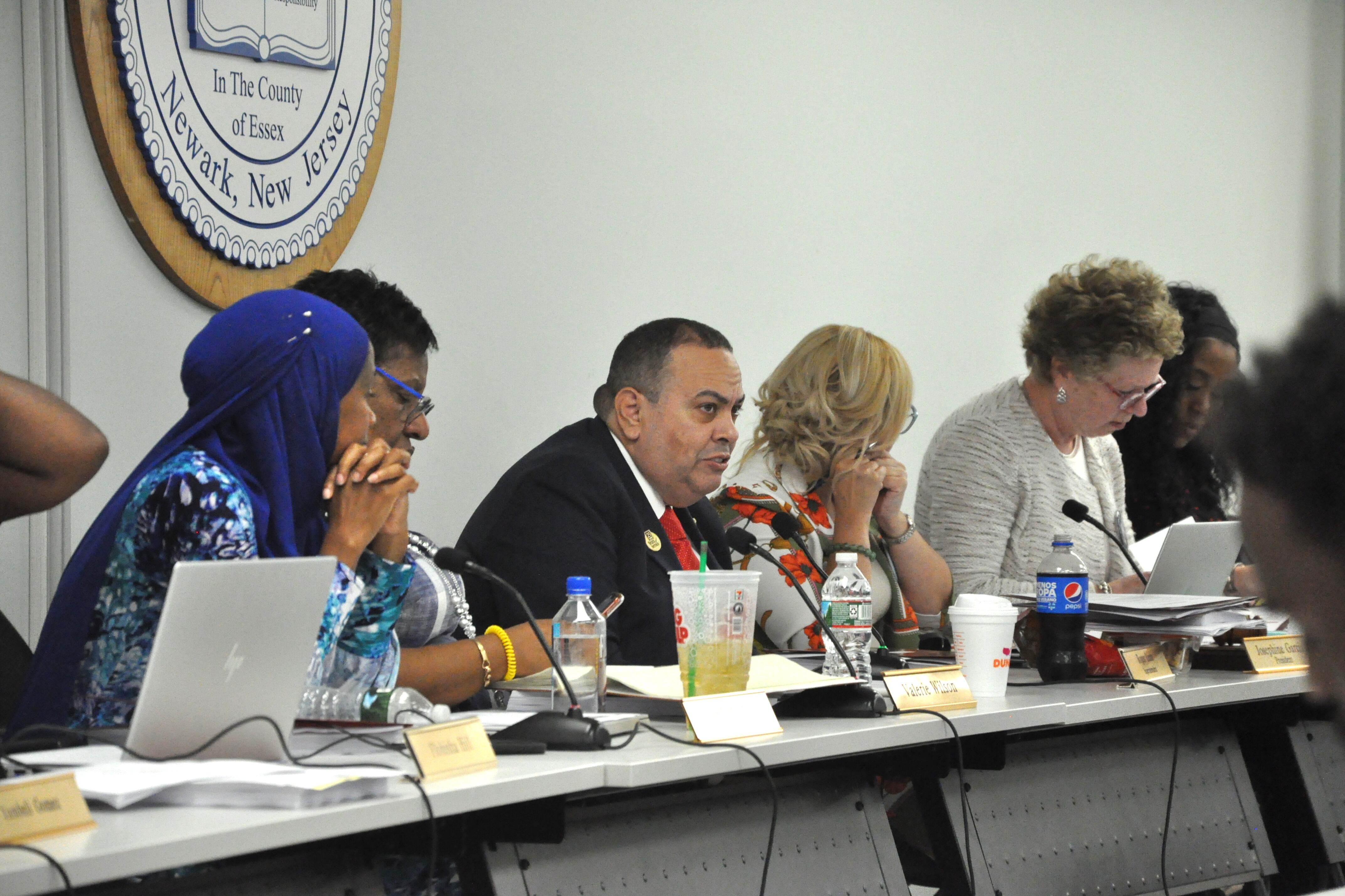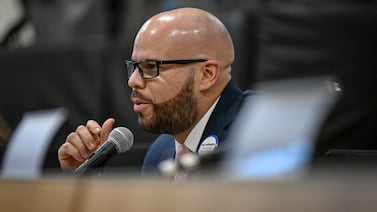The coronavirus pandemic has upended Tuesday’s school board election in Newark — forcing voters to cast ballots only by mail, preventing candidates from campaigning in person, and raising concerns about low turnout.
The district’s first all mail-in election, postponed to Tuesday by New Jersey Gov. Phil Murphy’s state order, comes after schools have been closed for months because of the pandemic. Voters will decide who will fill three seats on the nine-member board and whether or not to approve a 2% tax increase to help fund the school system. Some community organizers and candidates are wary of how many Newarkers will actually vote — historically, Newark school board elections have seen low voter turnout.
The unique circumstances of the election raise questions about how informed and involved voters will be. Newark Public Schools is transitioning fully out of state control, so voters theoretically have an especially important role to play in choosing elected officials to oversee the locally-controlled district, right now as it grapples with the unprecedented challenges of coronavirus.
Three of the six candidates have the backing of Mayor Ras Baraka and other top political leaders. The other three independent candidates are worried about the pandemic’s impact on the election and their ability to educate voters about their platforms. The independent candidates’ uphill battle in getting their names out to residents has been made even harder without the ability to campaign in person.
Powerful political leaders, including the entire city council, mayor, and state legislators that represent Newark, have endorsed the “Moving Schools Forward” slate, which includes Josephine Garcia, Flohisha Johnson, and Hasani Council. Garcia is the current board president and Johnson is a board member, while Council is running for school board for the first time.
The slate has been sending out mailers with photos of all of the elected officials who are backing the three candidates, who have raised a combined $35,720 for the campaign. The independent candidates have not reported any figures. (Only contributions over $300 are required to be reported.)
The three independent candidates — Sheila Montague, Ronnie Kellam, and Phillip Wilson — worry that the delay in the election and the loss of traditional campaigning puts them at an even greater disadvantage since “the other candidates are backed by a political machine,” according to Kellam.
Since social distancing measures have been put in place, Kellam has been relying primarily on social media to spread the word about his candidacy, as have Wilson and Montague.
“I’ve been emailing folks my platform… and been on social media to promote my platform that way,” Kellam said. “But I’m kind of worried about election turnout.”
Montague contracted the coronavirus last month, which prevented her from campaigning entirely, and is still recovering. She said she was unable to participate in a board election debate because of the illness.
“How can we campaign for people to know us in just a few weeks?” asked Montague. “There’s a sense of hopelessness and disenfranchisement.”
Some community organizations are stepping up to make sure Newarkers are fully informed. The Newark Trust for Education has created an election guide, while Project Ready has launched a campaign to educate Newarkers about the mail-in ballot process and ensure they’ve received their ballots.
“Our goal is to make sure that people have the knowledge and resources necessary to engage in the process of voting for school board members,” said Ron Chaluisán, executive director of the Newark Trust for Education.
The Newark Trust for Education’s website includes information on each candidate, step-by-step instructions in both English and Spanish on how to complete the ballot, and a fact sheet about the budget question on the ballot. Newark voters approved an education-related tax hike last year, but it might be a tougher sell now that many families are facing financial hardships due to the pandemic.
Chaluisán said he’s not sure what percentage of Newarkers are aware of the election at this moment. But he believes the most effective way to get information out in Newark is through networking and “trusted messengers,” people who have a following and make sure people connected to them have information.
Advocacy organization Project Ready has tracked for two years what a mostly all-mail voting process looks like across the country. Executive Director Shennell McCloud said the findings are heartening — that turnout for mail-in elections are generally higher than in-person elections.
“I’m hopeful this vote-by-mail election will allow us to be able to truly measure what it looks like for all parties to be voting by mail and getting to know the process a little,” she said.
According to Project Ready’s research, voter turnout in Newark for the school board election was 4.91% last year. To combat the low rate, Project Ready has launched a website to help residents understand all aspects of this year’s school board election, sent mailers, and enlisted about 10 phone bankers to call residents in all of Newark’s wards. Since mid-April, they’ve called about 3,000 residents and sent out mailers to another 4,000 Newarkers.
However, McCloud still worries whether enough Newarkers know about the election and how to vote by mail.
“The Newark Board of Education election is a very important one because members who are appointed oversee billions of dollars and dictate the future of children,” McCloud said. “Project Ready sees voting as an act of self care because the people who we elect are actually dictating the health and wellness of our families.”
Election officials started mailing ballots April 21, and Newarkers may return them immediately. Registered voters who have not received a ballot should request a replacement, voting officials said.
Using only black ink, voters should fill in the ovals below up to three candidates’ names and vote on the budget question. Then, after completing and signing the certificate, voters should insert the completed ballot into the postage-paid certification envelope, and insert that in the outer return envelope, before leaving it in a mailbox or at a post office.
Essex County officials say they will post a tentative count on the clerk’s website Tuesday, but don’t expect complete results until at least Friday. By law vote-by-mail ballots postmarked by Election Day must be counted if they arrive by 8 p.m. Thursday.





